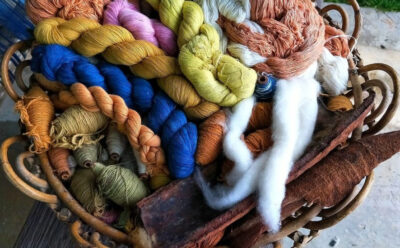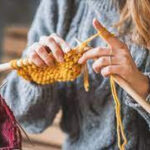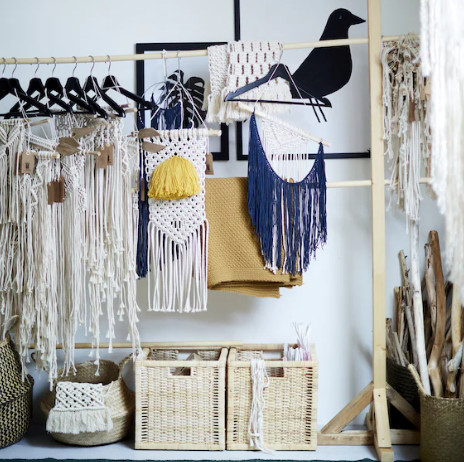Choosing the right yarn is an important skill for any knitter. Not all yarns are the same and there can be vast differences in material and weight. Knitters need to get to know the differences so they can select the right yarn for their projects.
Material
Knitting yarns can be divided into two main categories- natural and synthetic.
Natural yarns commonly include sheep wool, which is easy to work with, well priced and great for knitwear projects. It is durable but can be prone to pilling. Angora wool is another natural fibre and is considered a luxury yarn but its silky softness means it can be slippery and not great for ornate patterns. Alpaca wool is hypoallergenic and great for those with sensitive skin, which is why it is commonly used in baby patterns. The ultimate in luxury, cashmere is another natural yarn known for its softness and insulation. It is well suited to knitwear and other accessories designed to keep you warm, although it can be prone to pilling. Cotton is a common natural fibre which is cost-effective, machine washable and can showcase complicated stitchwork well.
Synthetic yarns include polyester, which is a great all-rounder because of its breathability. A common complaint is that it can be a touch scratchy. Nylon is a durable synthetic fibre which is smooth and cool and usually washes well, while rayon has many of the properties of natural fibres. It is soft and comfortable and takes heat away from the body, so it is good for summer garments.
Weight
Weight is another important factor in finding the right yarn. A cosy winter scarf, for example, will require a chunky, heavy-weight wool. Yarn weight classifications are: lace, superfine, fine, light worsted, worsted (which is the most commonly used type of yarn), bulky, super bulky and jumbo.
Knitting kits, such as those available at woolcouturecompany.com, are increasingly popular as they provide the right yarn for you. Sales of such kits rose exponentially during the Covid pandemic, as more people turned to knitting to reduce stress and pass the time.
Other factors which need to be taken into account when selecting yarn are the suggested needle size, washing instructions, the length of the yarn and the dye lot number. If your project requires several skeins of wool, ensure the dye lot numbers match for a good colour match.





